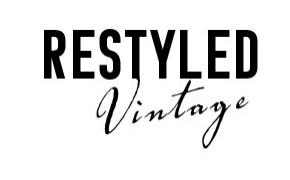
"With Meghan, Duchess of Sussex, and Kim Kardashian spotted in vintage wear, and its increasing availability on the high street, it could be the answer to sustainable shopping"
Like it or loathe it, when Kim Kardashian wears something, people take notice. With the reality TV star wearing secondhand Azzedine Alaïa to Paris fashion week, secondhand Jean Paul Gaultier to a party and a secondhand 1990s Thierry Mugler gown to an award ceremony, it suggests change is afoot. Who would have thought that Kardashian – a woman worth $350m (£270m), who usually wears Balmain and bodycon – would be making a case for sustainable fashion?

As consumers become increasingly aware of the environmental impact of fast fashion, they are looking for a more sustainable way to shop. Could buying secondhand be the answer?
Vintage, it seems, is increasingly in vogue across the board, from Meghan, Duchess of Sussex, who wore 1960s Dior to a christening, to its appearance in British Vogue (the May issue asks: “Does your dress look vintage?”), to high street stores H&M, Arket and & Other Stories announcing they would trial vintage and secondhand clothes sales on their websites. High-end boutique Browns has also just launched the label One Vintage, which uses antique textiles to create new garments. Octavia Bradford, the womenswear buyer for Browns, says: “Sustainability is the loudest conversation in fashion right now.”
A study shows that, last year, 64% of women were willing to buy pre-owned pieces compared with 45% in 2016 – and it is thought that by 2028, 13% of the clothes in women’s wardrobes are likely to be secondhand. Fashion circularity, a new term referring to the recycled life of a garment, is projected to reach $51bn in five years, up from the current $24bn, according to ThredUp’s annual resale report.
But now (thankfully) it is not just acceptable – it’s cool and has completely captured the fashion zeitgeist,” she says.

If the trend has waned of late, this has been purely about aesthetics – minimalism replaced boho chic, and modernity was more in demand than 1970s florals. But fashion has shifted. Aside from an increased awareness of sustainability, vintage fashion fits neatly into the wider mood of the Instagram age, where authenticity and originality – not being seen in the same outfit as anyone else – are highly prized. What better way to stand out than to wear clothes few others are likely to own?
Fashion tends to mine the past. Seeing such strong references on the catwalk gives confidence to fashionistas to embrace the original dresses and showcase original pieces in a modern way, we’re able to offer customers the original looks.”
Vintage naysayers who may have been put off in the past by thoughts of rummaging around in jumble-sale-like basements may be persuaded by the ability to buy online. The popularity of online vintage shops is great for those who don’t have access to everything.
According to the ThredUp 2019 resale report, resale has grown 21 times faster than apparel retail in the past three years. These luxury sites offer a glimmer of hope to those seeking a more affordable way to buy into designer fashion.
Not content to sit back and watch others profit from their vintage items, some luxury labels are relaunching decades-old designs from their own archives. Last year, for instance, Dior brought back its saddle bag because of the attention it was getting in the vintage fashion market. In February, Fendi brought back its Carrie Bradshaw-approved baguette bag from 1999 – luxury resale website Vestiaire Collective had seen a 558% increase in sales of the bag since January last year. “Every brand is currently developing a point-of-view on how to coexist with secondhand,” ThredUp cofounder and chief executive James Reinhart recently told the Business of Fashion.
Not content to sit back and watch others profit from their vintage items, some luxury labels are relaunching decades-old designs from their own archives. Last year, for instance, Dior brought back its saddle bag because of the attention it was getting in the vintage fashion market. In February, Fendi brought back its Carrie Bradshaw-approved baguette bag from 1999 – luxury resale website Vestiaire Collective had seen a 558% increase in sales of the bag since January last year. “Every brand is currently developing a point-of-view on how to coexist with secondhand,” ThredUp cofounder and chief executive James Reinhart recently told the Business of Fashion.
Of course, for some, buying vintage will never feel quite right. “It’s really not my bag,” says Bates. There are obvious pitfalls – sizing isn’t uniform, and, she says: “You have to be so careful to look for holes and moths and rips.”

But being able to call a 90s hoodie, a Dior bag from the 00s, or a dress first worn by Naomi Campbell in 1996 “vintage”, might just help to keep the appeal going. As Bates puts it: “At the end of the day it doesn’t really matter … the most important thing is that it’s recycled – it encourages people not to go out and buy more.”
To see some amazing finds, see what’s new in store www.shoprestyled.com
Source: https://www.theindustry.fashion/is-buying-vintage-clothing-the-most-eco-way-to-shop/

Leave a comment